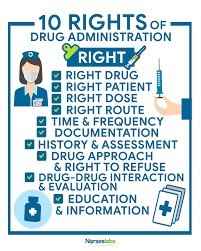A nurse is caring for a client who is receiving positive end-expiratory pressure (PEEP) via mechanical ventilation. The nurse should monitor the client for which of the following adverse effects of PEEP?
Hypoxemia
Tension pneumothorax.
Malignant hypertension
Atelectasis
The Correct Answer is B
A. Hypoxemia is a condition of low oxygen levels in the blood. PEEP can actually improve oxygenation by preventing alveolar collapse and increasing functional residual capacity.
B. Tension pneumothorax is a life-threatening condition of air accumulation in the pleural space that causes increased intrathoracic pressure and compresses the lungs, heart, and great vessels. PEEP can increase the risk of tension pneumothorax by creating excessive positive pressure in the airways and alveoli.
C. Malignant hypertension is a severe form of high blood pressure that can cause organ damage and stroke. PEEP can cause a transient increase in blood pressure due to increased intrathoracic pressure, but it does not cause malignant hypertension.
D. Atelectasis is a condition of partial or complete lung collapse due to alveolar collapse or obstruction. PEEP can prevent or treat atelectasis by maintaining positive pressure in the airways and alveoli.
Nursing Test Bank
Naxlex Comprehensive Predictor Exams
Related Questions
Correct Answer is B
Explanation
A is incorrect because the completion of the incident report should not be documented in the client's medical record, but in a separate file for quality improvement purposes.
B is correct because the time the medication was given is an essential fact related to the incident that should be documented in the client's medical record.
C is incorrect because the reason for the medication error should not be documented in the client's medical record, but in the incident report for analysis and prevention of future errors.
D is incorrect because the notification of the pharmacist should not be documented in the client's medical record, but in the incident report for follow-up and corrective actions.

Correct Answer is ["B","C","E","F"]
Explanation
The four findings that require follow-up are B, C, E, and F.
Rationale:
- Blood pressure: A normal blood pressure for an adolescent is 110/70 mm Hg. The question does not provide the adolescent's blood pressure, so it cannot be determined if it requires followup or not.
- Capillary refill: A normal capillary refill time is less than 2 seconds. A prolonged capillary refill time indicates impaired blood flow to the extremity, which could be due to vascular injury, compartment syndrome, or shock.
- Pedal pulse: A normal pedal pulse is +2 or +3. A weak pedal pulse (+1) indicates reduced blood flow to the extremity, which could be due to vascular injury, compartment syndrome, or shock.
- Heart rate: A normal heart rate for an adolescent is 60 to 100 beats per minute. The question does not provide the adolescent's heart rate, so it cannot be determined if it requires follow-up or not.
- Skin temperature: A normal skin temperature is warm and dry. A cool skin temperature indicates reduced blood flow to the extremity, which could be due to vascular injury, compartment syndrome, or shock.
- Pain: A pain level of 10 on a scale of 0 to 10 indicates severe pain that needs to be managed with appropriate analgesics and nonpharmacological interventions.
Whether you are a student looking to ace your exams or a practicing nurse seeking to enhance your expertise , our nursing education contents will empower you with the confidence and competence to make a difference in the lives of patients and become a respected leader in the healthcare field.
Visit Naxlex, invest in your future and unlock endless possibilities with our unparalleled nursing education contents today
Report Wrong Answer on the Current Question
Do you disagree with the answer? If yes, what is your expected answer? Explain.
Kindly be descriptive with the issue you are facing.
